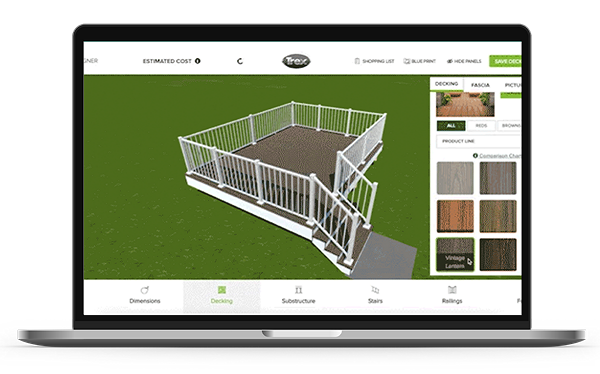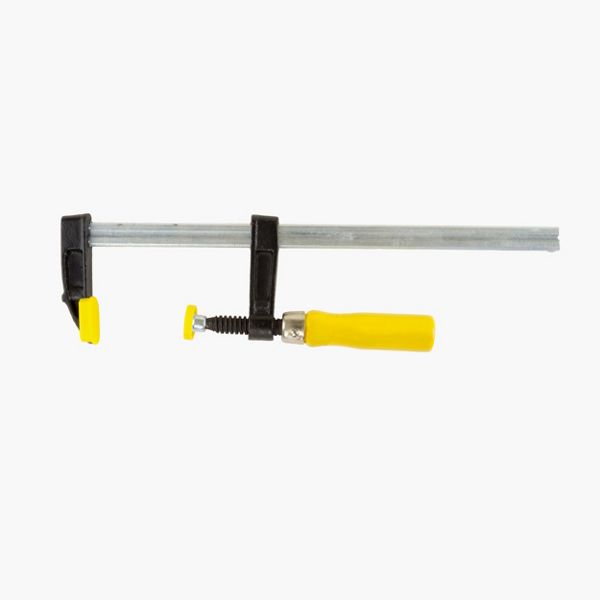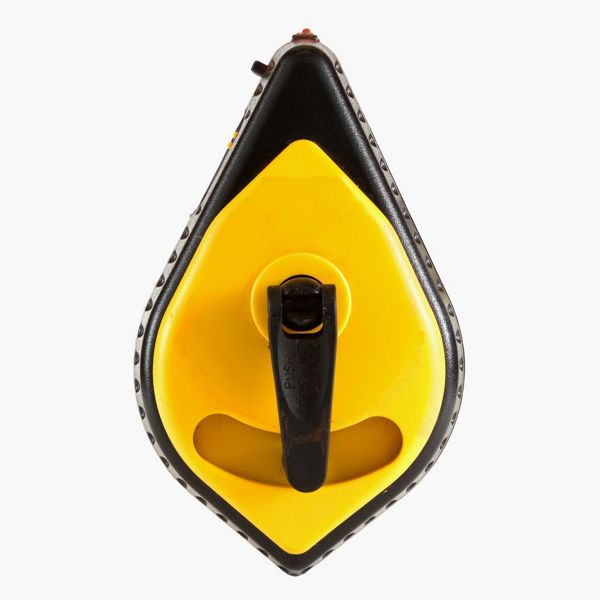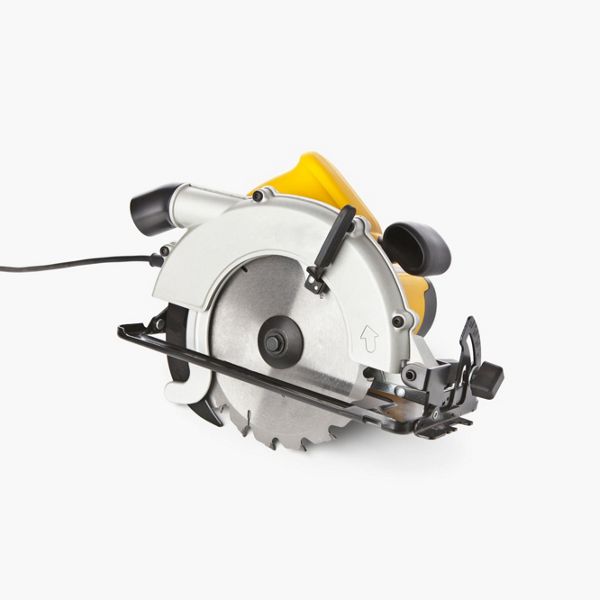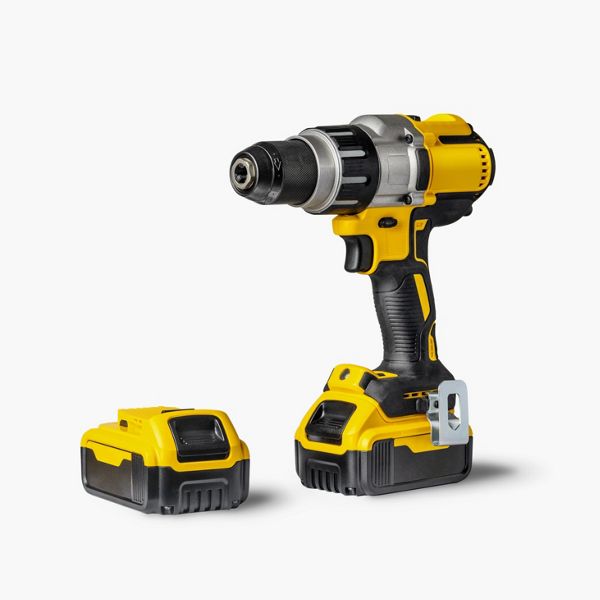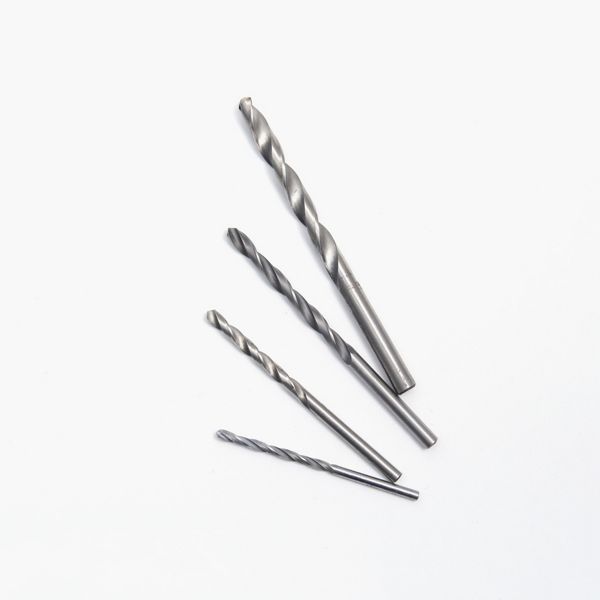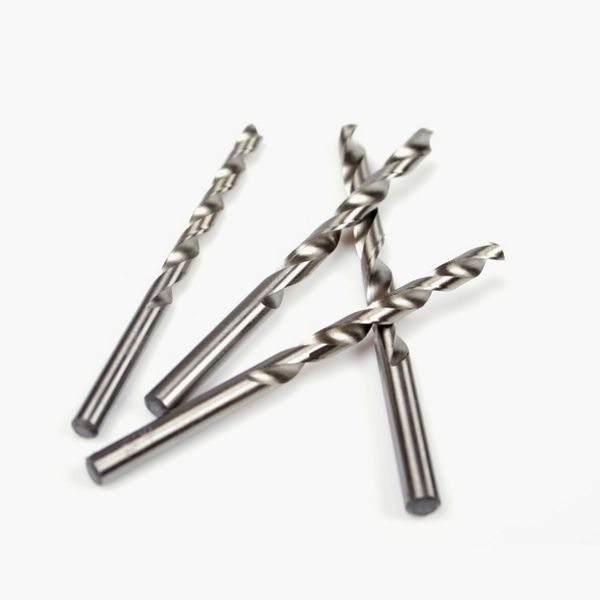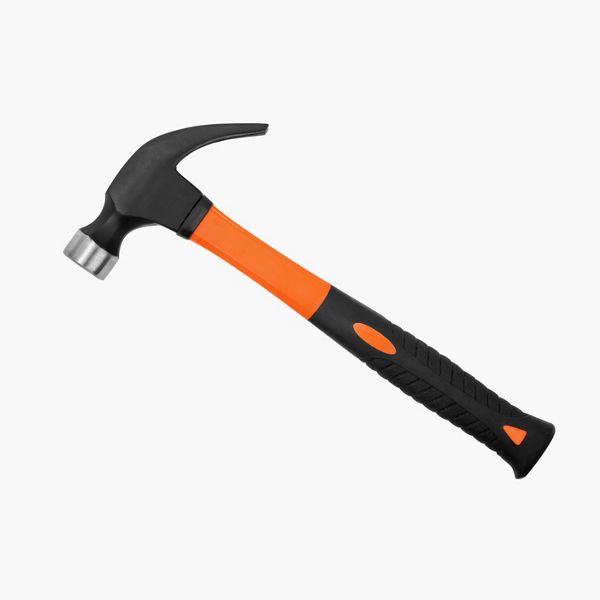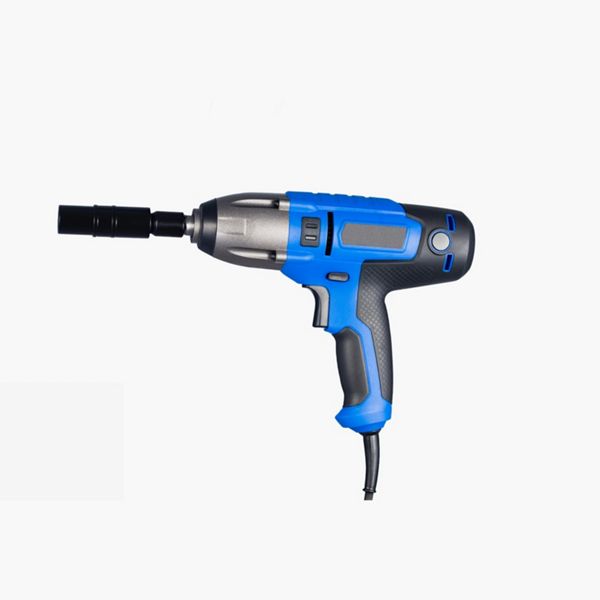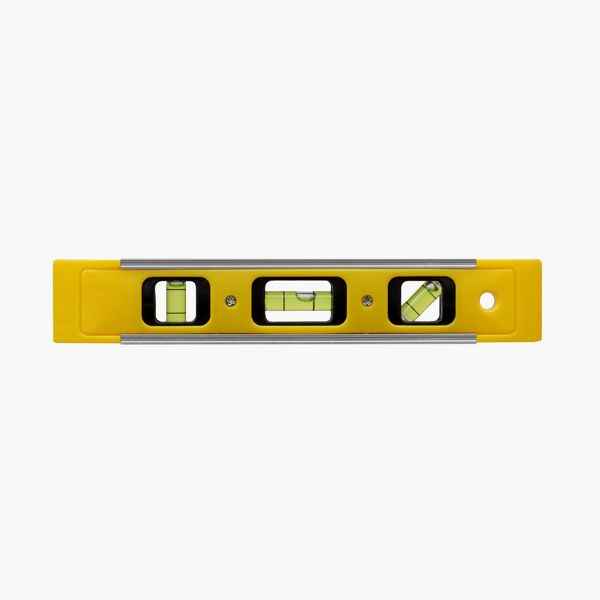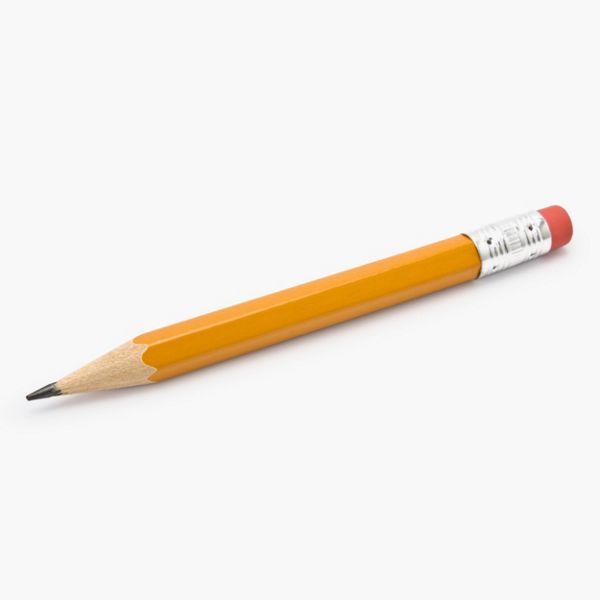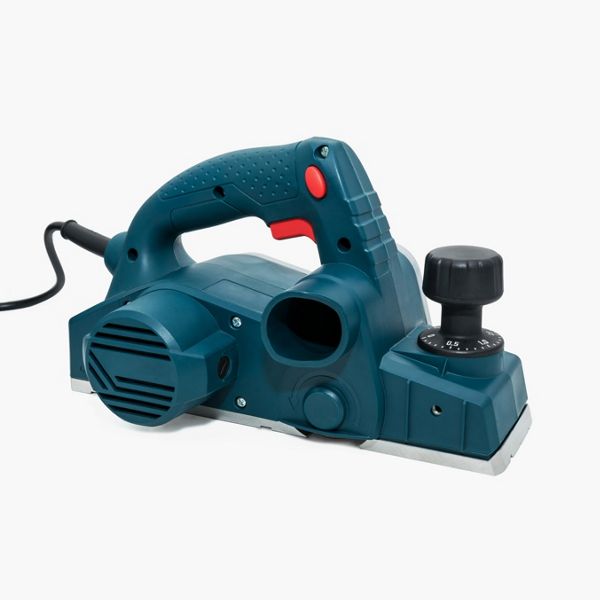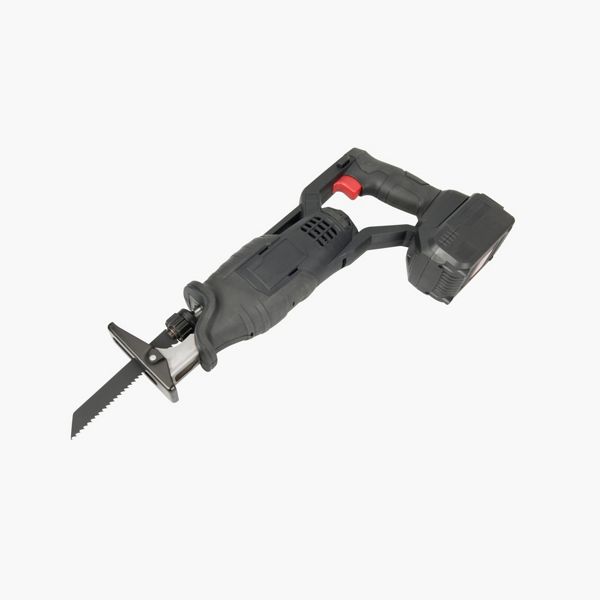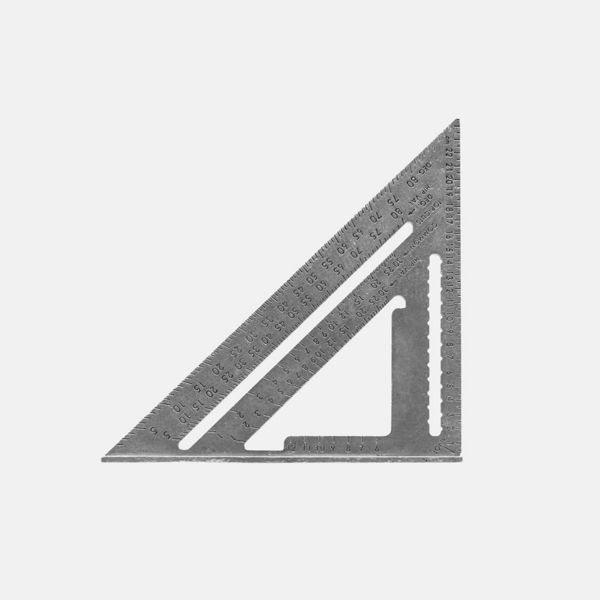- 01: Crowning of Joists
- 02: Rim Joist
- 03: Field Joists
- 04: Breaker Board Joist Layout
- 05: Determine Deck Joist Length with Cantilever
- 06: Install Front Rim Joist
- 07: Deck Surface Flat for Decking (How to Plane Joists)
So you're ready to get started? Watch our how-to tutorial before you start your build.
Before you begin any DIY project, make sure to wear the appropriate personal safety equipment. Eye protection, ear protection, gloves, long pants, a long-sleeved shirt, and reinforced toe shoes are recommended. Always make sure that you have a first aid kit nearby. For any home project, be certain to follow local code and permitting requirements.
The joist material will have a crown in it. The crown of a joist is a natural bow to the wood. It typically shows up on only one side of the joist. It is necessary to review the joists and determine where the crown is located - this is called crowning the joist and is important to do before installing the joists. The crowns of the joist should be installed up.
All the joists need to be installed with the crowns up so that if the crown settles the joist will be flat. If the crown is installed down, then the joist could settle and would not be flat. The joist, in that case, would dip down in the decking.
If some of the joists are installed with the crowns up and some of the joists installed with the crowns down, then one joist will be higher than the other and create a wavy look when the decking is installed.
Step 1
To crown the joist, hold it vertically and look down the edge of the joist. The joist may need to be flipped over to see the other side. This can be done by holding the joist up to eye level or leaving the joist on the sawhorses and bending down to see the edge.
Step 2
Once the crown is identified, mark an arrow to show which side has the crown. In some instances, the joist will have a very slight crown and even look straight. Still mark the side that looks like it has the crown. This mark will let you know later that the joist was assessed.
Rim joist is a term used to describe the outer joists of a deck. This refers to both the front rim joist and the side rim joist.
The front rim joist is the joist that is attached to the end of the joists and runs perpendicular to them. The side rim joist is the joist on each edge of the deck frame.
Step 1
When installing the side rim joist, start by ensuring that the top of the side rim joist is flush with the top of the ledger board.
Attach the side rim joist with approved fasteners. These fasteners will go through the rim joist and into the ledger board. In this project, Simpson Strong Tie SDWS 3” Framing screws were used.
Step 2
A mechanical connection is also required. This needs to be some type of joist hanger to attach the side rim joist to the ledger board. A Simpson Strong Tie L70Z was used with 1 ½” Simpson Strong Tie SD Connector screws.
Place the L70Z angle bracket in place and fasten the screws through the designated holes in the bracket. Make sure to fill all holes in the bracket.
Step 3
When a drop beam is present, there must be a mechanical attachment from the joist to the beam. Here the side rim joist is attached to the beam to prevent any uplift of the joist off the beam.
Start by making sure the side rim joist is flush with the outside edge of the beam and clamp it in place. This will ensure that the joist does not move when installing the hardware.
Step 4
Hold the Simpson Strong Tie Hurricane Tie H2.5AZ in the corner of the joist and beam. The hurricane tie should have the tab of the tie flush with the top of the beam. Fasten the tie to the joist first with 1 ½” Simpson Strong Tie SD Connector screws.
Step 5
Once all the holes in the hurricane tie have been filled with fasteners, attach the hurricane tie to the beam with the same fasteners. Make sure to fill all the holes.
The field joists are the joists in the middle of the deck, in between the side rim joists. To install these joists, we recommend starting from the side rim joist that was previously installed and work one-by-one to the other edge of the deck frame.
Pro Tip
Installing the blocking, joist hangers and beam attachments as each joist is installed will eliminate the need to climb back over the joists later.
Step 1
Start by installing the blocking over the beam. This is a piece of the joist material cut to length between the joists. These blocks are required by code to prevent the joists from rolling or twisting.
Step 2
The ledger board was laid out and marked and can be used as the template to measure the blocks needed. Cut the block to length and coat each cut end with a wood preservative.
Place the block over the beam to one side of the beam or the other. The blocks will be staggered, meaning that the first block with be flush with the front of the beam and the next block will be flush with the back of the beam, etc.
Using a speed square, make sure the block is straight up and down, mark the top of the joist to know where to hold the block.
Fasten through the side of the rim joist into the block with Simpson SDWS 3” Framing screws.
Repeat this process for the blocking on all other beams.
Pro Tip
The joist hangers should not be installed on the ledger first and then have the joist sit into them. Although you may think this is a quicker approach, it is not recommended. Wood joists can be different widths even if they came in the same bundle, so if the joist hangers were installed first, the joists would be higher and lower as they went down the ledger board. The decking would then be wavy as the decking would be as high and low as the joists.
Step 3
With the crown up (as determined before the installation process in Chapter 1), slide the joist up to the mark laid out earlier on the ledger board. Place the joist on the side marked with an "X" to keep the correct spacing.
Make sure the top of the joist is flush with the top of the ledger board.
When working alone, working with no drop beam, or when detail is of the most importance, a L70Z angle bracket or small piece of wood can be fastened to the top of the joist. This will sit over the edge of the joist and on top of the ledger board to ensure that the top of the joist and top of the ledger board are flush with each other. Remove the block or L70z once the joist has been attached.
Step 4
Slide the joist hanger in place from the bottom of the joist. Make sure that the joist hanger is tight to the bottom and sides of the joist. A Simpson Strong Tie LUS28Z was used for this application.
Step 5
Start by fastening into the top hole of the hanger with a 1 ½” Simpson Strong Tie SD Connector screw.
Holding the joist hanger tight to the bottom and side of the joist, fasten into the top hole of the joist hanger on the opposite side of the joist than the previous fastener.
Verify that the joist is straight up and down by using a speed square against the ledger board or a small level to verify that the joist is plumb.
Step 6
Fasten the hanger to the ledger board through the remaining holes with the same 1 ½” SD Connector screws. Once those are filled, then install 2 ½” SD Connector screws into the angled holes on the side of the joist hanger. These screws will go through the hanger, joist and into the ledger board preventing the joist from pulling away.
Step 7
Push the joist tight to the beam blocking. Make sure the block is flush to the beam. Verify that the block is straight up and down. The top of the block must be flush with the top of the joist. If the block is higher than the joist, then it will affect the decking and create a bump when the decking is installed.
Once these items have been verified, fasten the joist to the block with the Simpson SDWS 3” Framing screws. Two screws per block.
Step 8
Install the hurricane tie to attach the joist to the beam. The field joists can use either a H1Z or the H2.5AZ shown earlier from Simpson Strong Tie. Use the same 1 ½” SD Connector screws.
Repeat the process starting with the blocking. Make sure the blocking is staggered, not in line with the block on the other side of the joist.
Repeat the steps to install the rest of the joists. Blocking, joist, joist hanger, fasten joist to blocking, and hurricane tie.
A breaker board is a decking board that will be installed perpendicular to the other decking boards. It is placed in the middle of the deck length because the deck boards are usually not long enough to cover the entire length of the deck or to create a pattern in the deck. Without the breaker board, there would be a long decking board and a short decking board to finish the length.
As many of these boards would be attached long and short, there would be a lot of seams where the long and short decking boards meet, and blocking would be required at each seam. The breaker board creates one seam in the middle and looks intentional. This also makes it easier to block the one board down the middle instead of all the seams that would be created the other way.
Here the breaker board would sit on the two middle breaker board joists.
Step 1:
The outer two joists are installed to support the ends of the decking boards that will run perpendicular to the breaker board.
By installing each joist one at a time, it is easier to reach all the hardware in its respective locations. If all the joists would have been installed and then the hardware, some places would have been harder to access.
Repeat the process of installing one joist at a time with all hardware and blocking until the end of the deck is reached.
When the deck frame is built with a cantilever, there are many options in the design of the deck. The cantilever in this project refers to the place where the joists hang out over the beam. This distance will be stated on the plan but can have some maneuverability by shortening that distance.
One of the options with a cantilever of the joists over the beam is to cut the frame length to be the same as the number of full deck boards. This means that the frame can be cut to match full deck boards and there will be no need for a narrower board at the house.
Step 1
Start by measuring out from the house on top of the outside rim joist. Place the tape measure tight against the house and extend it all the way out to the length specified on the plans. In this project, the distance was 14’.
Step 2
Use the total distance stated on the plans to determine how many inches there are from the house to the edge of where the deck frame will end. In this case, the plans say 14’. There are 12” in a foot so multiply 12x14=168.
Take that number and divide it by the width of a full deck board plus the gap that is needed between the deck boards. In this case, the deck board is 5 ½” and the gap between the deck boards is ¼”. This comes to 5.5+.25=5.75. Divide the 168 total inches by 5.75 which equals 29.21.
This distance would mean that the deck would have 29 full deck boards and a narrow, ripped piece of a deck board at the house.
To avoid the ripped deck board at the house, the deck boards can be round down to 29. Take 29 full deck boards and multiply that by the width of a deck board and gap of 5.75 which equals 166.75. This puts the end of the deck at 166 ¾” away from the house.
There will now be 29 full deck boards and no narrow ripped down piece of a deck board. In this case the number of deck boards was rounded down from 29.12 to 29.
This will make the cantilever shorter than the 2’ measurement notated on the plans. The cantilever length can be adjusted to be shorter but, in an instance where the cantilever distance was desired to be longer, an approval from the local municipality would be needed. In many municipalities, 2’ is the maximum length a joist can overhang a beam. Check with the local municipality for approval.
Step 3
Mark the outside rim joist at 166.75”.
To accommodate the front rim joist being 1 ½” thick, minus the 1 ½” thick material from the overall length, 166.75-1.5=165.25.
Mark 165 ¼” on the outside rim joist. This will be where the joist is cut to length.
Step 4
Measure the same distance from the house on the opposite side of the deck. Place the tape measure on top of the outside rim joist and mark the required distance, 165 ¼” in this instance.
Now take a chalk line and attach on one side, pull the line tight and snap the line to mark where the joists need to be cut. A screw can be attached to the side of the joist at the desired length to attach the string line.
Pro Tip
Cutting the joists to the marked string line makes sure the deck frame and deck boards are straight. Walls in houses can have a bow in them and if all the joists were cut to the same length and then installed, they would follow the bow of the house making the deck boards curved or wavy. The use of a string line ensures a straight line for the deck boards to be installed.
Step 5
To cut the ends of the joists make sure to be safe when using the circular saw. Start by setting the depth of the saw blade to the thickness of the material to be cut.
Make sure to stand to the side of the saw when cutting.
Using a speed square, place the shoe of the saw against the speed square and line the blade up with the mark to cut on top of the joist. Hold the speed square tight against the joist and let the saw follow the speed square to cut the line on the joist. Stop the saw before the blade goes all the way through the joist.
With the blade still in the wood, tilt the saw to face down the joist. Slide the speed square up against the edge of the shoe and tight against the top of the joist.
Hold the speed square tight to the joist and let the saw follow the speed square edge. This will ensure a straight cut and keep the end of the joist plumb. This keeps the rim joist plumb which in turn keeps the guardrail post plumb. Cut all the way through the joist and let the end of the joist fall to the ground.
Repeat this process on the remaining joists. In the instance of a double joist, cut the top of the joist with the circular saw and then finish the cut with a hand saw or reciprocating saw.
Treat all ends of the joists that were cut.
Step 1
Attach a small block to the bottom of the outside rim joist. Use a scrap piece of lumber and attach it from the underside of the joist with 3” wood screws. It should protrude past the end of the joist.
Attach these blocks on each end of the deck and in the middle where the front rim joist will end. They will be used to support the rim joist while fastening to the field joists.
Place the rim joist on top of the blocks and close to the ends of the joists.
Step 2
Mark the front of the rim joist to show where the fasteners will be placed. In this case the fasteners were two inches down from the top and two inches up from the bottom. There will be two fasteners at each joist.
Simpson Strong Tie SDWS 8” Timber screws are required to attach the rim joist to the field joists where a guardrail post will be attached in between two joists. Two 8” fasteners into the two adjacent joists totaling 4, 8” fasteners are required.
The remaining joists will have the 5” Simpson Strong Tie SDWS Timber screws to attach the rim joist to the field joists. Two fasteners into each joist.
Pro Tip
Predrill the joists when installing the longer fasteners.
Step 3
When the deck is longer and needs to have two pieces of lumber to cover the total distance, a splice is going to be required. Where a splice is required, putting the splice in between two joists is preferred.
Meet the two pieces of lumber together and attach them to the field joists with the appropriate fasteners. Cut and place a piece of the joist material in between the two field joists and tight against the front rim joist. Fasten the block from the sides of the field joists using Simpson Strong Tie SDWS 3” Framing screws. Two on each side.
Install 4, Simpson Strong Tie 3” Framing screws through the front rim joist into the block. Two screws on each side of the splice.
In the beginning of the joist install process, joist crowning was determined to ensure that the natural bow in the joists would always be facing up. With all the joists crowned up, the deck frame has the best chance of laying flat when the decking boards are installed.
However, even with the joists crowned and placed correctly, the crowns in the joists can still vary creating high spots in the deck frame. Planeing the joists at this stage is recommended to ensure the flattest surface possible.
Step 1
Start with a level and work from one edge of the deck to the other. Place the level on at least three joists. If the level rocks up and down, then one of the joists is high. Mark that joist to show it as a high spot.
Repeat this process down the entire deck on the front third of the deck frame.
Repeat this process in the middle of the deck frame and then in the final third of the deck frame.
Step 2
Once all high spots have been marked, use a planer to cut the high spots down. Take a little bit at time and check with the level in between cuts. Treat the cuts with a wood preservative once complete.

